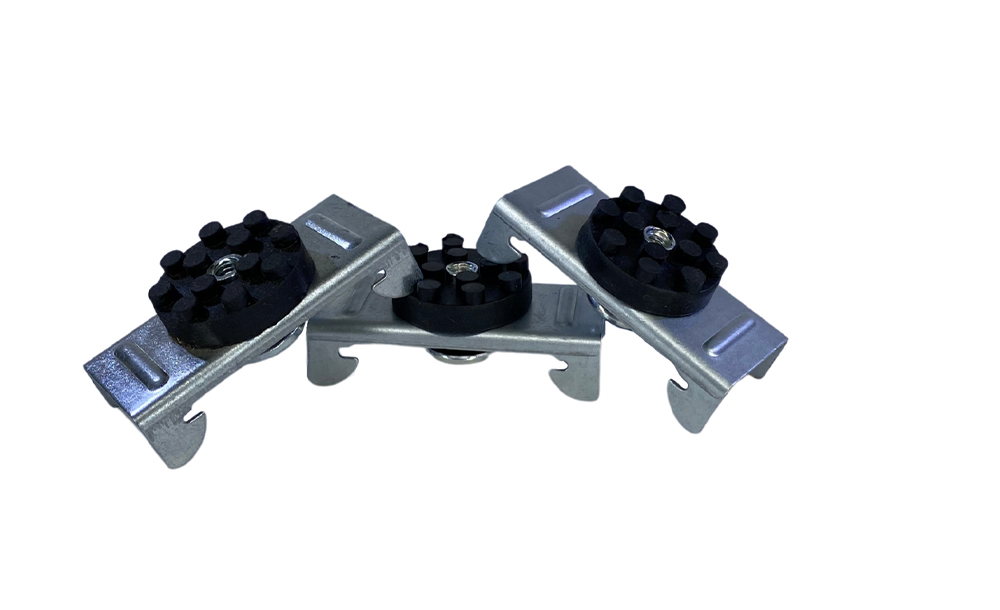X

Sound transmission through partitions can be challenging to control. Isolation clips decouple a partition’s structure to improve transmission loss.
Isolation clips are typically minor structural elements that limit the amount of sound vibration that passes through a wall or ceiling.
Sound Isolation Systems are primarily used to interrupt the flow of energy from one material to the next. For example, if you had two rooms with a common wall, you would need to separate, or decouple the drywall from the studs to stop the transmission of sound waves.
Structural born noise is often the hardest to deal with. You need a high mass and an air space as mentioned above so that there is no positive structural contact. For example, in the case of a hard floor above the listening environment you would need to decouple the floor joists from the ceiling joists. The most common and effective way to do this is to use resilient sound isolation clips.
Sound Isolation Clips are used to eliminate structural borne noise by breaking the connection between the room that contains the noise source and the outside world. This is called acoustic de-coupling or sound isolation.
Key considerations for determining the type of isolation system include:
Sound isolation clips should be simple and easy to install for any contracting team
Rugged, high-quality materials are used to ensure these systems withstand everyday use for years to come
Even when hidden within a structure, these products contribute greatly to the enhanced acoustic well-being of facilities and their occupants
Replacing isolation clip components is a quick and simple process
As world leaders in the production of isolation clips, PAC International, LLC has more UL Fire Resistive Design Assemblies than any other competitor. PAC’s high performance standard provide greater assurances to our clients, and our communities.
As experts in acoustic design, we can help develop an effective, comfortable, and aesthetically pleasing acoustic solution that helps your organization improve the quality and productivity of time spent in your facility.
Our project managers will work with you to assess your noise control needs. With a keen focus on delivering a turn-key solution, we can help design an acoustic package to solve any noise issue.